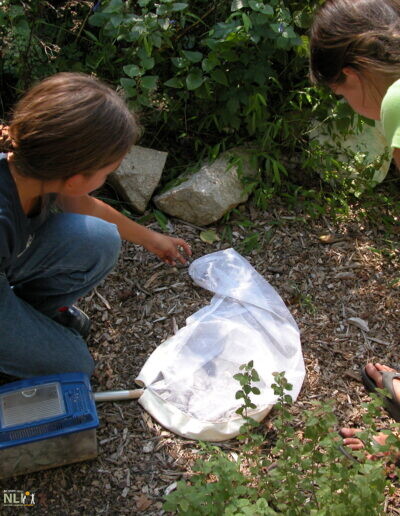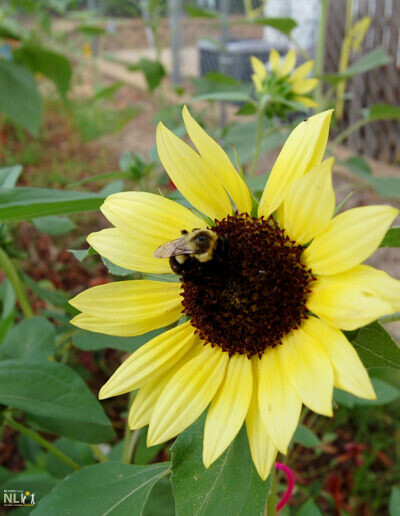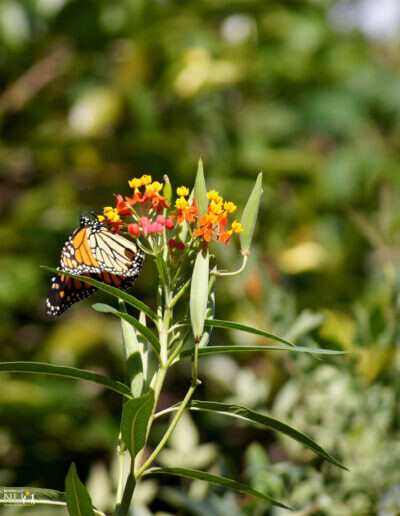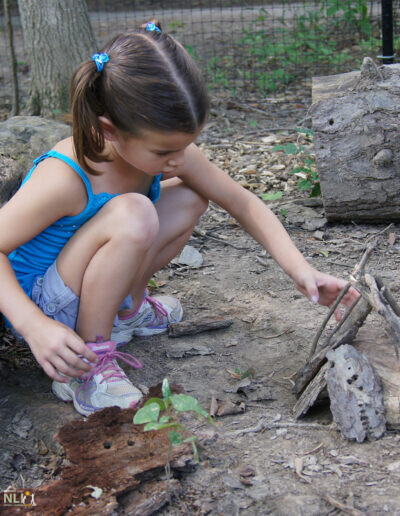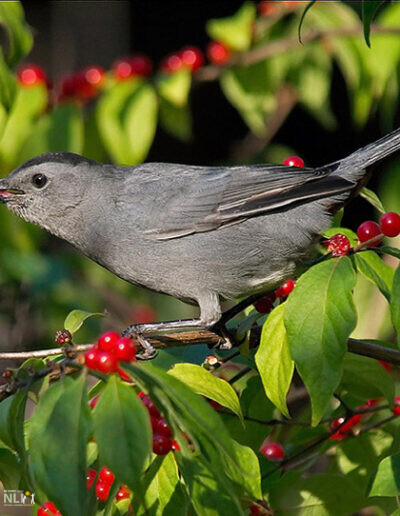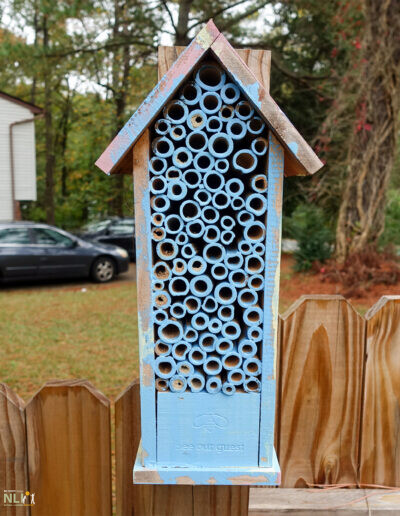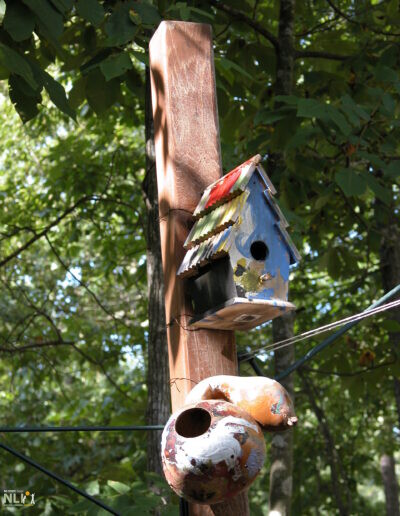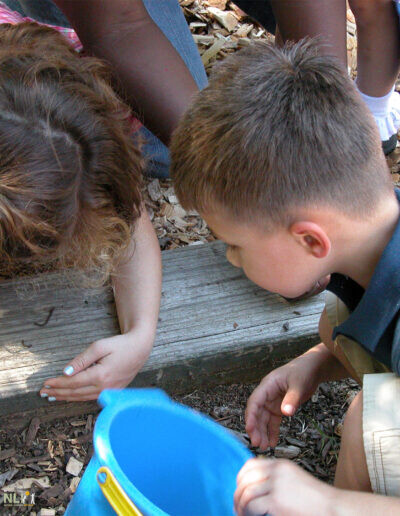26. Wildlife Gardens
Creating habitat for wildlife in an outdoor learning environment (OLE) provides countless opportunities to teach children about environmental stewardship. Watching and observing wildlife encourages STEAM skillsets as children learn about life cycles, animal behavior, and local ecosystems. This Infosheet outlines different strategies for creating healthy wildlife habitat in your OLE, an investment that will benefit children and the planet for years to come!
Plant in Layers
To create high-quality wildlife habitat, plant a variety of vegetation with different heights, flowering times, and growth forms. Vertical diversity ensures that different species of have food sources and shelter throughout the year. A mix of ground covers, flowers, grasses, shrubs, and trees will draw many different species of wildlife that require environments for nesting, shelter, and food. Native solitary bees, for example, nest holes in the ground or burrow in twigs and dead tree limbs; birds may nest in dense woody shrubs, in the bough of a tree, or in a hollow log. A diverse planting strategy will encourage a variety of different species to call your OLE home.
YEAR-ROUND WILD FOOD
A diverse palette of plants will provide local wildlife with the food sources they need throughout the year. When choosing flowering plants for your OLE, select plants with different blooming periods. This will ensure that visiting pollinators, like bees and butterflies, have a continuous food source. In the cooler months, leave seed heads at the end of the growing season to provide an additional source of winter food for birds.
NATIVE PLANTS
Whenever possible, choose native plants to improve wildlife habitat in your OLE. Native plants are better adapted to their region, often requiring less water and little maintenance. Additionally, many pollinators, such as the iconic monarch butterfly, depend on very specific native plants for food. By selecting native species of plants for your OLE, you are supporting a broader range of wildlife with the nuts, berries, seeds, pollen, and nectar that those plants provide. Check your local Cooperative Extension for native plant lists and additional resources.
maintenance strategies for wildlife
Many wildlife species are negatively effected by commonly applied insecticides and pesticides, so use organic, integrated pest management practices whenever possible. If an insecticide is necessary, apply them at night, when many pollinators are no longer active. Organic pest management will keep both wildlife and children healthy in your OLE!
ADDITIONAL SHELTERS AND FEEDERS
Bird and butterfly feeders can provide wonderful opportunities for children to observe wildlife. Keep in mind that bird feeders should be located far from classroom windows and located within 10—15 feet of shrubby vegetation to provide shelter from predators. Make a bird house, bird feeder, bee “hotel,” or toad house with children in your care to excite them about wildlife in the OLE.
RECOMMENDED PLANT LIST FOR pollinators and wildlife:
Perennial Flowers:
Anise hyssop, Agastache spp.
Aster, Aster spp.
Beebalm, Monarda didyma
Black-eyed Susan, Rudbeckia hirta
Butterfly bush, Buddleja davidii
Cardinal flower, Lobelia cardinalis
Coreopsis, Coreopsis spp.
Goldenrod, Solidago spp.
Liatris, Liatris spicata
Purple coneflower, Echinacea purpurea
Purple-top verbena, Verbena bonariensis
Salvia, Salvia greggii
Sunflower, Helianthus annuus
Yarrow, Achillea millefolium
Trees:
American beautyberry, Callicarpa dichotima
Arrow-wood viburnum, Viburnum dentatum
Blackhaw, Viburnum prunifolium
Blueberry, Vaccinium spp.
Ninebark, Physocarpus opulifolius
Spicebush, Linderia benzoin
Staghorn sumac, Rhus typhina
Virginia sweetspire, Itea virginica
Wax myrtle, Morella cerifera
Trees:
Cornelian cherry, Cornus mas
Dogwood, Cornus florida
Eastern redbud, Cercis canadensis
Eastern red cedar, Juniperus virginiana
Red maple, Acer rubrum
River birch, Betula nigra
Sweetbay magnolia, Magnolia virginiana
Serviceberry, Amelanchier spp.
White oak, Quercus alba
Resources
- NCSU Cooperative Extension Native Plant Resources: https://gardening.ces.ncsu.edu/native-plant-resources/
- Gardening for Wildlife: https://www.nwf.org/Native-Plant-Habitats/Create-and-Certify
- The Audubon Society: https://www.audubon.org/conservation/bird-friendly-communities

